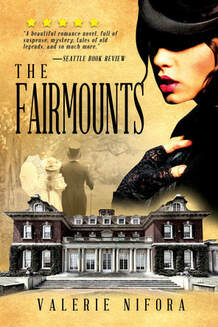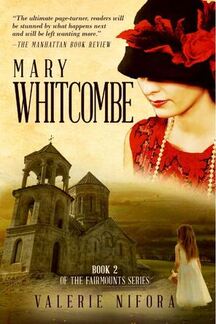Q: What inspired you to write The Stark Beauty of Last Things? Answer: When I discovered Montauk, Long Island, I was immediately captivated: It was wild and sparsely populated and absolutely perfect. Over time, when the area began to get overdeveloped, I grew anxious about its future. The consequences of climate change were becoming apparent, too. So my novel grew out of my passion for Montauk’s natural beauty and my fear of changes that would spoil its specialness. I also wanted to convey a sense of urgency that we need to act now: Once a landscape is lost it is lost forever. Q: How did you create your cast of characters? Answer: Each of the female characters is wholly invented but based collectively on women I encountered, whether the tough women who worked in the fishing industry to those who worked seasonally in the bars and restaurants to those who owned small shops or motels. I also drew heavily on my experience with the environmental community. The only main character in the novel who is not local to the area – and the only male – was invented out of whole cloth. Ironically the storyline only gelled once I had him, an outsider, to help frame the story. Q: How was the novel's title chosen, and what does it signify for you? Answer: I wanted my title to convey a sense of the beauty of nature and what’s lost when we as human beings lose our connection to the natural world. The phrase was written by the poet Edward Hirsh to mean that beauty can be present even in death. The words struck me as perfectly capturing the elegiac mood I intended, and the idea that we often don’t appreciate something until it is gone. Q: How important is setting to you in your writing? Answer: Setting is one of, if not the most, important elements to me in fiction. I gravitate to novels with a strong sense of place. I work hard to convey the physical worlds of my stories, and in the case of The Stark Beauty of Last Things, it was a joy to convey the gorgeous coastal landscape and to share my love of everything Montauk through the prose. Q: Did you know how the novel would end before you started writing it, or did you make many changes along the way? Answer: I definitely didn’t know how the book would end. I used the novel to explore my own thoughts and ambivalences about the meaning and the best uses of land, and there was a point where I had no idea how to resolve the many contradictions I’d set up in the story, and between hope and despair. I tried out many different endings before finally landing on what felt right and feeling resolved that I had found the most authentic way to conclude both the story of Montauk itself and the main characters’ personal stories. Visit Céline on her website:
www.celinekeating.com Join Céline on Faceboook: www.facebook.com/AuthorCelineKeating Follow Céline on Instagram: www.instagram.com/celinekeatingauthor Engage Céline on twitter: www.twitter.com/celinekeating LINK for BOOK: https://www.amazon.com/Stark-Beauty-Last-Things-Novel/dp/1647425778 PRESS & MEDIA: https://celinekeating.com/press/
0 Comments
Q: Why did you write this book? Answer: I guess you could say I became inspired by the ghost of Marion Davies. She’s on quite a few minds these days with two new books about her in one year, and I got swept up in the energy. It happened when I was on tour at Hearst Castle and the docent said, “Did you know Marion Davies loaned William Randolph Hearst $1 million in 1937 during the height of the Depression when he was on the verge of bankruptcy?” My reaction was “No. I didn’t know that.” And then my next reaction was, “How come we don’t know that about Marion Davies?” Do women ever get the credit for being heroic—for saving a man as powerful as WRH was in the 1930s? And just so you know, we’re talking about the equivalent of $17 million today raised in 24 hours. And she wasn’t married to him, but she had been his defacto-wife for two decades by 1937. So that’s how the ball got rolling, as they say, and I went home to research her and found very little. I couldn’t believe there wasn’t already a historical fiction novel about her. That’s when I decided to write her life story. Q: What do you hope people will take away from this book? Answer: Please take away the true history of her life. And let’s set the record straight about Citizen Kane and how awful Orson Welles was to Marion when he made that movie. Citizen Kane took away Marion’s reputation in Hollywood and she became a laughingstock. We are now looping back into history and re-evaluating the whole thing. Orson Welles apologized to Marion, but the damage had been done. Let’s see her as a pioneer in the silent movie era, a hard worker who made more than forty films in twenty years, and a devoted lover of William Randolph Hearst, who stayed with him until the end, supporting and comforting him until the day he died. Q: Tell us about your writing process. Answer: I am a writer who needs inspiration. My first book was a memoir, and I was inspired to write that, wanting to parse out the difficult details of my early life. My second book was historical fiction, and now I’m in the middle of writing another memoir. I am the type of writer who doesn’t have much discipline in writing every day, but when I get inspired, the story just flows out. Visit Leslie on her website:
www.lesliejohansennack.com Join Leslie on Faceboook: www.facebook.com/lesliejohansennack Follow Leslie on Instagram: www.instagram.com/Leslie.johansen.nack Engage Leslie on twitter: www.twitter.com/leslie_nack LINK for BOOK: https://www.amazon.com/Blue-Butterfly-Novel-Marion-Davies/dp/1647423473 PRESS & MEDIA: https://www.lesliejohansennack.com/media/
Q. You've received several awards for your recent novel, The Fairmounts, with Mary Whitcombe being the sequel, what inspired you to write them? Answer: The Fairmounts was a dream that I had during the pandemic. Writing the was my mental salvation. It was a very difficult time. I lost a lot of loved ones. It was difficult for a lot of people. Writing as Harry was the light for me through all that darkness and a way to honor the wonderful people that risked sacrificing themselves to care for others. Q. Had you published anything before The Fairmounts? Did you always want to be a writer? Answer: I published an autobiographical poetry book about love called I Asked the Wind. I know that I've always been a storyteller. Even the poems are small distinct stories. I think stories are my art form. I let them take whatever shape they want. They're an extension of me in many ways. I try to highlight the beauty in the world. I do believe that life is beautiful, and people make it ugly. So, I try not to contribute to the darkness and add to the beauty. Q. Is there darkness is your books? What would you say is your unifying themes? Answer: I think there are characters that are dark, yes. It's a balance of dark and light. Light always wins, of course. I write about love, forgiveness, redemption, and hope. It's how I try to live my life. Do no harm, and if I can, do good. That's what you find in my books. There are bad things that may happen, but we are always greater than those bad things. Q. Are your characters based on real people or are they entirely fictional? Answer: I think all my characters are various facets of me, to be honest, as well as real people that I know. They are pieces of people that I sort of put together and create these fictional beings that feel very real to people. It's all entirely unconscious by the way. It's not something I intentionally do. It just happens. I've had people tell me that they know the characters, or they go out into the world and try to cast them. Oh, that one looks like a Harry LaCroix, or maybe that one is a John Fairmount, that sort of thing. It's always amazing to me. Q. How do you feel about your work being adapted into other forms, such as movies or TV shows? Answer: That would be a dream come true. I think the stories are written in a very cinematic way. I also think the stories stay with you long after you put the books down. I'm always open to that possibility, but until then, I'm going to keep letting my characters tell their stories. Visit Valerie on her website:
www.valerienifora.com Join Valerie on Faceboook: www.facebook.com/ValerieNifora Follow Valerie on Instagram: www.instagram.com/valerienifora Engage Valerie on twitter: www.twitter.com/vnifora LINKS for BOOKS: https://valerienifora.com/thefairmounts/ https://www.amazon.com/Mary-Whitcombe-Valerie-Nifora/dp/B0CNGBV3K7/ PRESS & MEDIA: https://valerienifora.com/reviews/ Check out Valerie's UPCOMING NEW RELEASE book here. |
AuthorJane Ubell-Meyer founded Bedside Reading in 2017. Prior to that she was a TV and Film producer. She has spend the last five years promoting, marketing and talking to authors and others who are experts in the field. Archives
May 2024
Categories |
Contact
Bedside Reading, LLC , 700 Canal Street Suite 176A Stamford CT 06902
For more information contact: jane@bedsidereading.com 917 848 3353
Media
Privacy Policy
Terms & Refund Policy
Bedside Reading® is a Registered Trademark
Bedside Reading, LLC , 700 Canal Street Suite 176A Stamford CT 06902
For more information contact: jane@bedsidereading.com 917 848 3353
Media
Privacy Policy
Terms & Refund Policy
Bedside Reading® is a Registered Trademark









 RSS Feed
RSS Feed